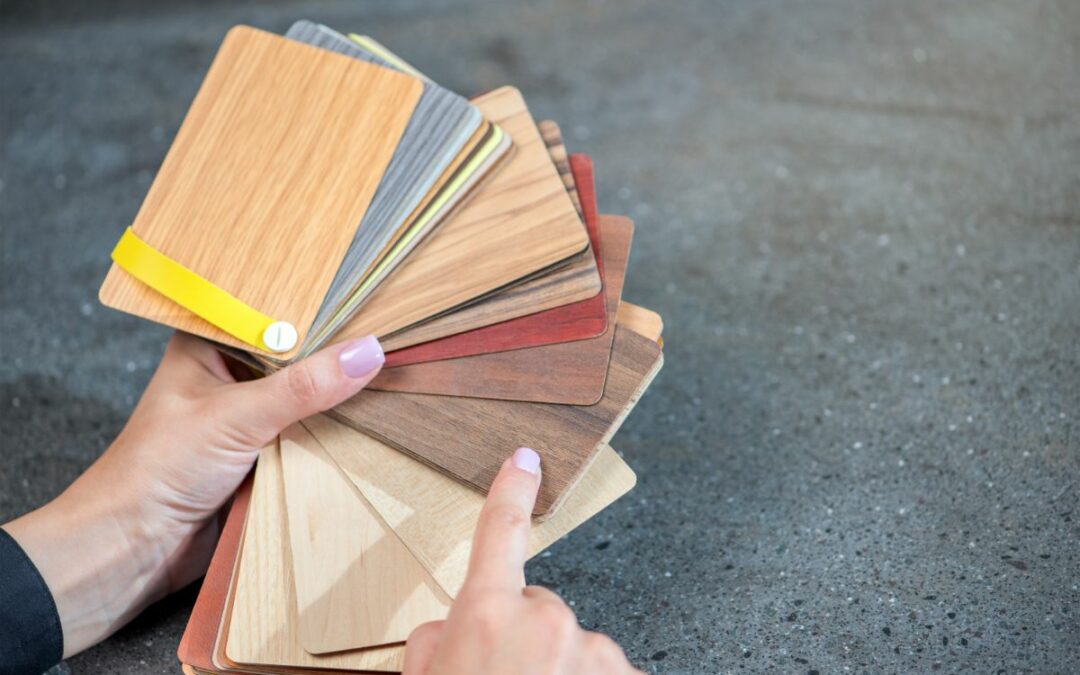This surface layer, which features a wood grain design, is created through a printing process replicating real wood’s look. The printed sheets are then bonded to a durable core material, such as medium-density fiberboard (MDF) or particleboard, providing structural integrity and support.
Characteristics of Laminate Furniture:
Construction:
- Surface Layer: The top layer is a printed, decorative layer that can mimic various wood types and grains. This layer is often covered with a protective clear coat to enhance durability and give a polished look.
- Core Material: The core is usually made from MDF or particleboard, which are engineered wood products. These materials are chosen for their stability and cost-effectiveness.
Appearance:
- Aesthetic Variety: Laminate furniture can come in a wide range of styles and finishes, from the look of exotic hardwoods to modern, abstract designs. This versatility makes it easy to find pieces that match different décor styles.
- Shiny Finish: Many laminate pieces feature a glossy finish, enhancing their visual appeal and making them easy to clean.
Durability:
Cost-Effectiveness:
- Affordable Option: Laminate furniture is generally more affordable than solid wood furniture, making it an attractive option for budget-conscious buyers.
- Economic Manufacturing: Using engineered core materials like MDF allows for efficient production processes, further reducing costs.
Difference Between Laminate and Solid Wood Desks
Material Composition
Laminate Desks:
- Construction: Made from a synthetic surface layer that mimics the appearance of wood. This layer is created through a printing process and is bonded to a core material such as medium-density fiberboard (MDF) or particleboard.
- Surface: The printed design can replicate several types of wood grains and colors, providing a wide range of aesthetic options.
- Core Material: Typically uses engineered wood products like MDF or particleboard, which are less expensive and more uniform than solid wood.
Solid Wood Desks:
- Construction: Made entirely from natural wood, such as oak, maple, cherry, or walnut.
- Surface: Features wood’s natural grain and texture, which can vary significantly from piece to piece, giving each desk a unique appearance.
- Core Material: Composed of solid wood throughout, offering natural durability and longevity.
Durability and Maintenance
Laminate Desks:
- Durability: The protective top layer makes it highly resistant to scratches, stains, and heat. It is ideal for high-traffic areas or heavy use.
- Maintenance: Easy to clean with a damp cloth and does not require special care or treatment.
- Repair: If damaged, laminate cannot be easily repaired or refinished; often, the entire piece or affected area must be replaced.
Solid Wood Desks:
- Durability: It is naturally strong and durable, but it is more susceptible to scratches, dents, and stains than laminate.
- Maintenance: Regular care, such as polishing and conditioning, is required to maintain its appearance and prevent drying or cracking.
- Repair: Can be sanded and refinished multiple times to remove surface damage and restore its original look.
Aesthetic Appeal
Laminate Desks:
- Appearance: Offers a range of styles and finishes, including the look of exotic woods and modern designs. The finish is typically consistent and uniform.
- Feel: Does not have the same tactile warmth and authenticity as real wood.
Solid Wood Desks:
-
Appearance: Offers a natural, timeless beauty with unique grain patterns and variations. Each piece is distinctive.
Feel: Provides a warm, authentic, and premium feel that many people find appealing.
Cost
Laminate Desks:
- Price: More affordable due to using less expensive core materials and efficient manufacturing processes.
- Value: Provides substantial value for the price, especially for those looking for durability and low maintenance.
Solid Wood Desks:
- Price: More expensive due to the cost of natural wood and the craftsmanship involved in solid wood furniture.
- Value: Offers long-term value due to its durability and the ability to refinish but requires a higher initial investment.
Environmental Impact
Laminate Desks:
- Sustainability: It often uses recycled materials in the core, but the synthetic surface and manufacturing processes can have a higher environmental impact than natural wood.
- End-of-Life: More difficult to recycle due to the combination of materials used.
Solid Wood Desks:
-
Sustainability: It is made from natural, renewable resources. The environmental impact depends on the source of the wood and forestry practices.
End-of-Life: Easier to recycle or repurpose and biodegradable if not treated with certain finishes or chemicals.
Conclusion
When choosing between a laminate and a solid wood desk, consider your priorities regarding durability, maintenance, aesthetic preference, budget, and environmental impact. Laminate desks offer a practical, cost-effective solution with low maintenance, while solid wood desks provide a timeless, premium look with the potential for long-term use and refinishing.
Our team at ABE is standing by to help you choose an office desk that fits your needs and budget. Contact us to get started today!

